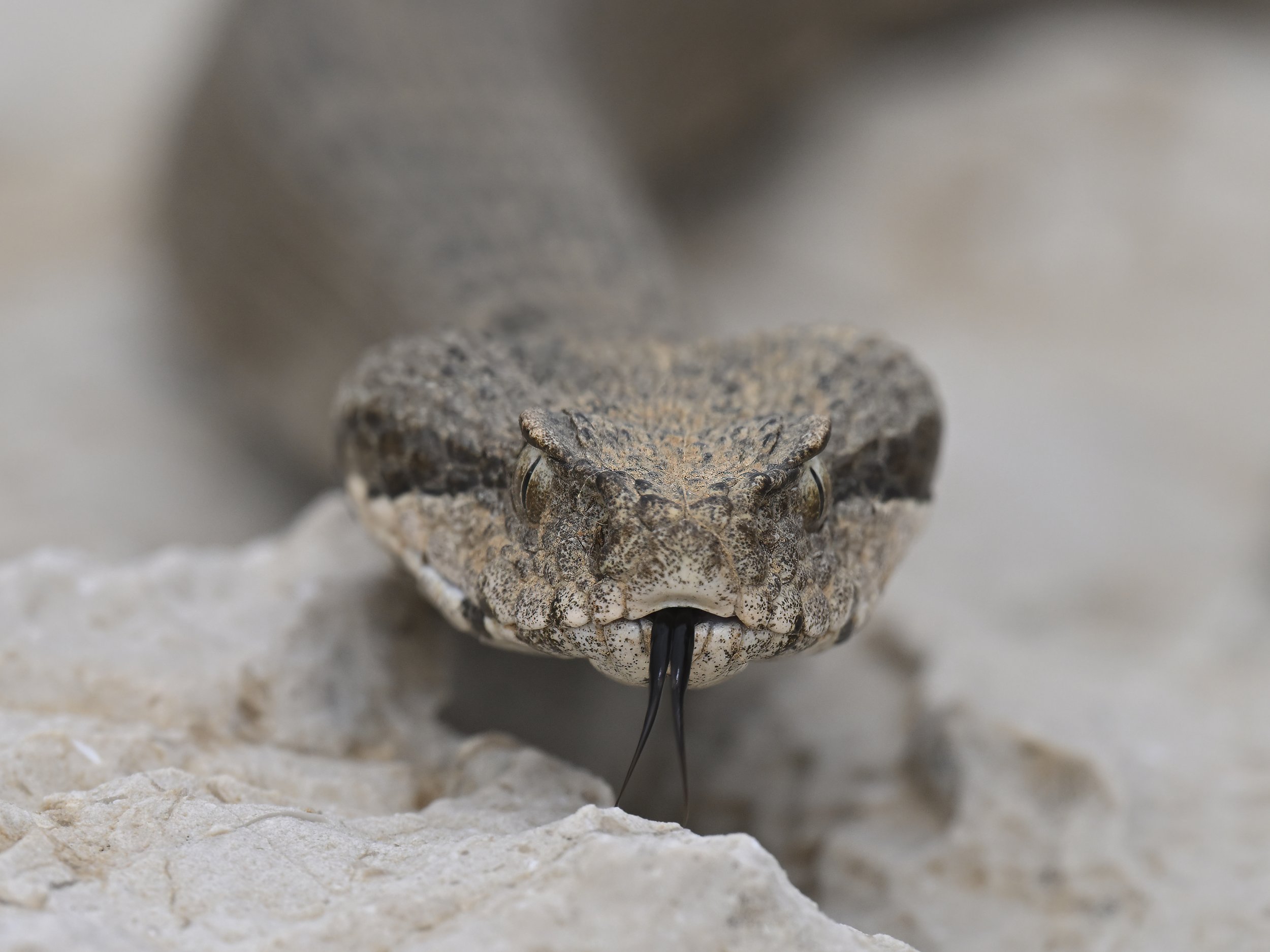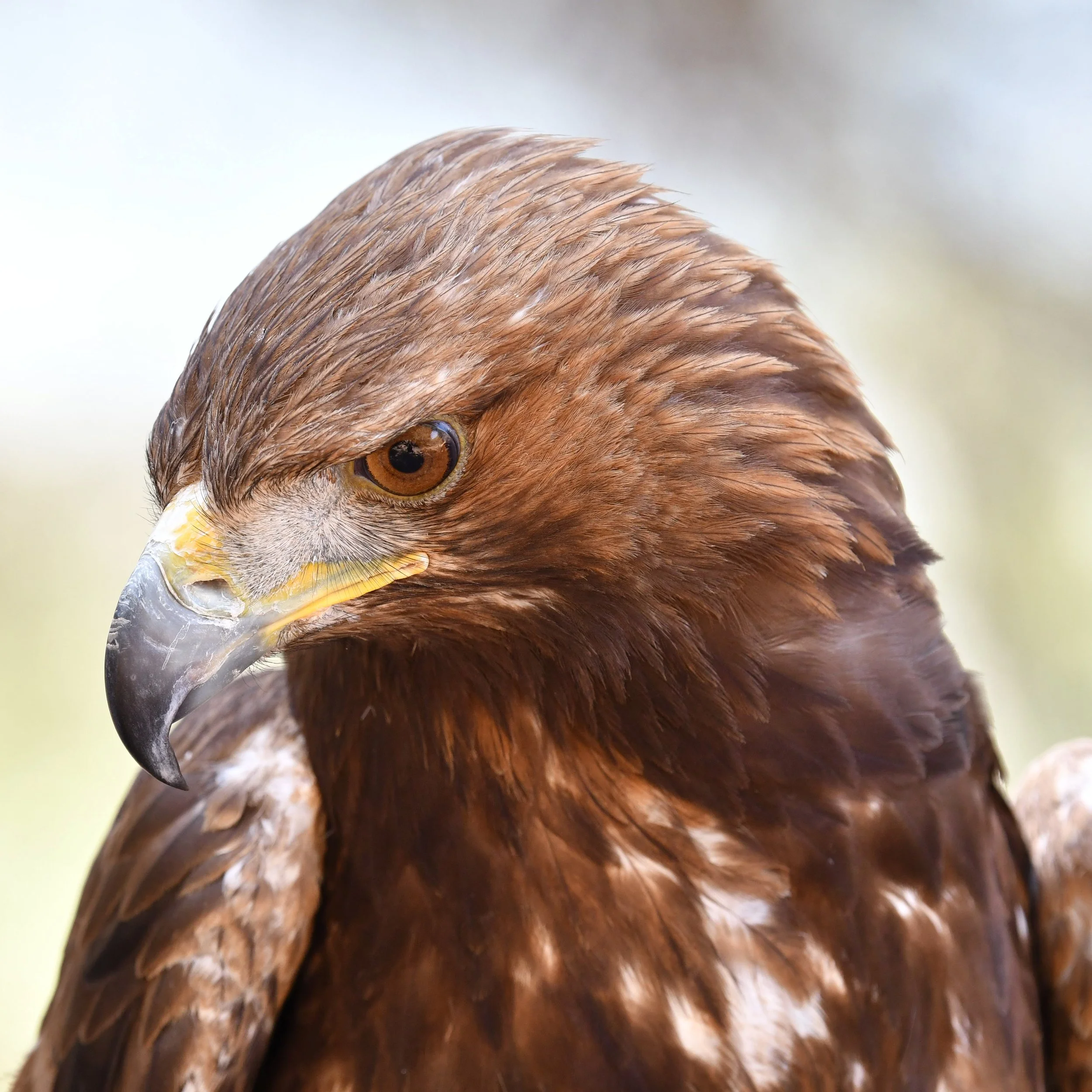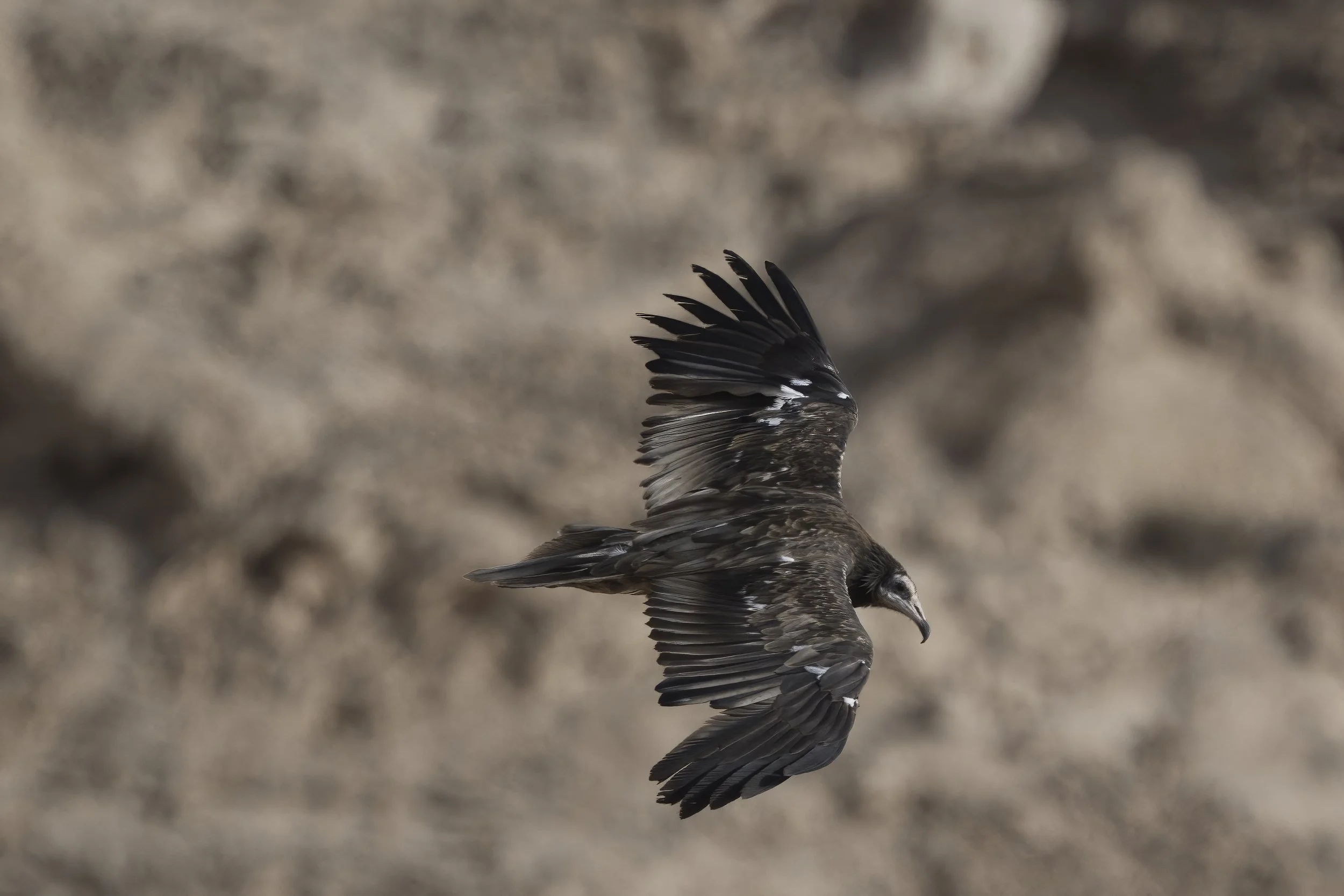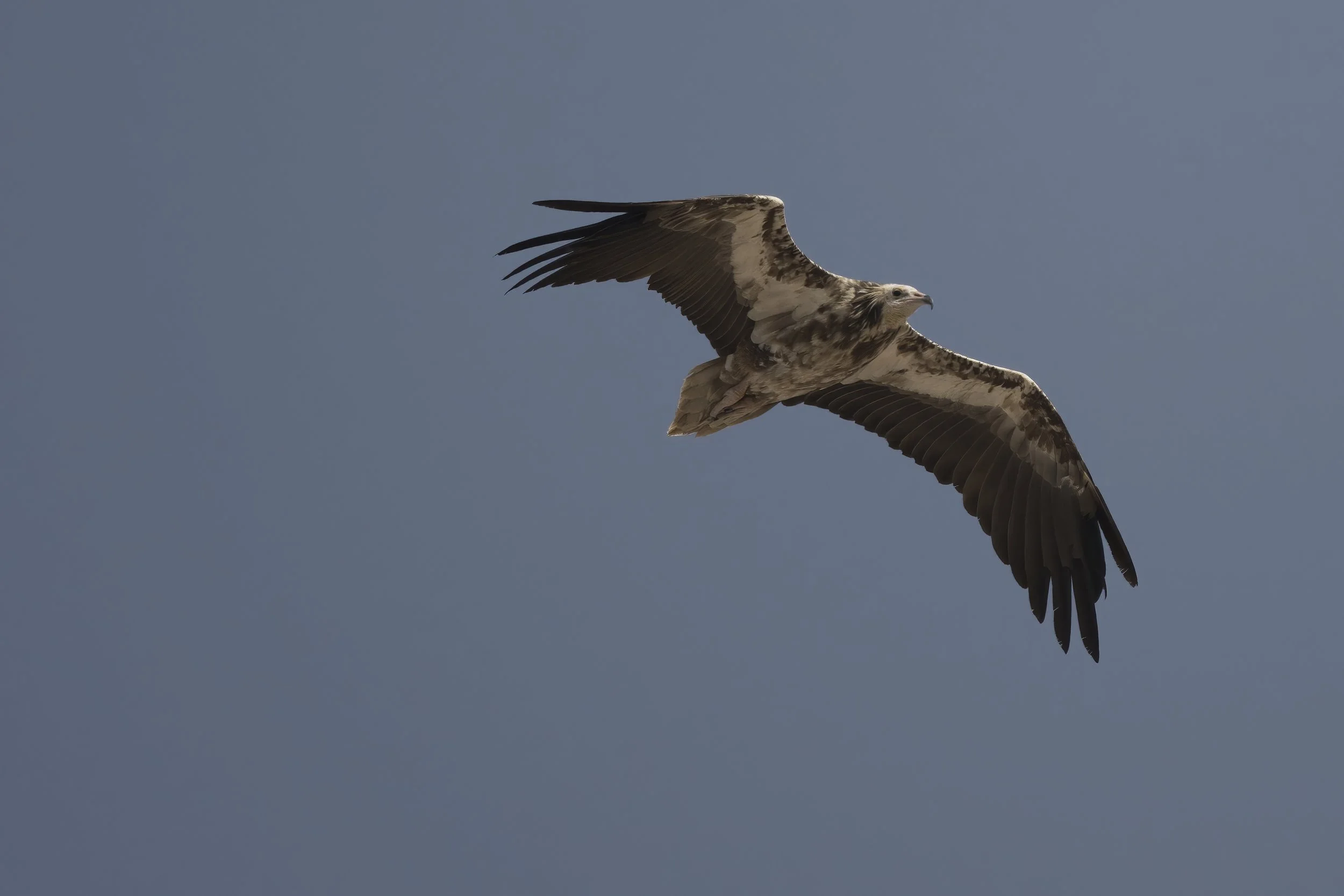Egyptian Vulture / Neophron percnopterus
The Egyptian Vulture (Neophron percnopterus) is a resident species in Jebel Hafeet, with individuals observed throughout the year. This rugged mountain region provides suitable nesting sites and a stable environment for the species. While the Egyptian Vulture is primarily known as a migratory bird across much of its range, a small resident population persists in the UAE, particularly in mountainous areas like Jebel Hafeet and nearby regions.
The UAE government has taken steps to protect the Egyptian Vulture and other raptors. Jebel Hafeet is part of a protected area, and the government has implemented conservation initiatives to safeguard birds of prey. Efforts include anti-poisoning campaigns, habitat preservation, and regulations against hunting. The vulture also benefits from broader conservation programs aimed at preserving biodiversity in the UAE, such as initiatives by the Environment Agency – Abu Dhabi (EAD) and collaborations with international wildlife organizations.
The Egyptian Vulture (Neophron percnopterus) in the UAE primarily inhabits mountainous and arid desert regions, with Jebel Hafeet being one of its key strongholds. This rugged limestone mountain provides ideal nesting and roosting sites, with its steep cliffs and rocky crevices offering protection from predators and human disturbances. The species prefers open landscapes where it can easily locate food, often scavenging near livestock areas, landfills, and natural carcass sites.
In addition to mountains, Egyptian Vultures are sometimes seen in semi-desert plains, wadis, and coastal areas, where they follow food sources. While they can adapt to various environments, their dependence on large open spaces with minimal human interference makes mountainous regions like Jebel Hafeet and parts of the Hajar Mountains critical for their survival in the UAE.
The Egyptian Vulture (Neophron percnopterus) is a medium-sized vulture, measuring 47–65 cm in length with an impressive wingspan of 1.6–1.7 meters. It typically weighs between 1.6 to 2.4 kg. Adults display striking white plumage with contrasting black flight feathers on the wings, while their body and tail feathers often appear cream-colored due to dust and environmental exposure. One of its most distinctive features is its bare yellow face and throat, which contrast with its feathered body. The facial skin can turn a deeper orange during the breeding season. Its long, slender, and slightly curved beak is well adapted for scavenging, with the upper mandible featuring a small hook for tearing food. The dark brown eyes give it an intense gaze, while its pale, grayish legs and feet are relatively weak compared to other vultures, as it does not rely on strong talons for hunting but rather for walking and scavenging. The wedge-shaped tail, unlike the more rounded tails of larger vultures, enhances its ability to glide efficiently while soaring through the sky.
| NOT EVALUATED | DATA DEFICIENT | LEAST CONCERN | NEAR THREATENED | VULNERABLE | ENDANGERED** | CRITICALLY ENDANGERED | EXTINCT IN THE WILD | EXTINCT |
|---|---|---|---|---|---|---|---|---|
| NE | DD | LC | NT | VU | EN | CR | EW | EX |
The Egyptian Vulture (Neophron percnopterus) is an intelligent and highly adaptable scavenger with unique behaviors that distinguish it from other vultures.
1. Feeding Behavior
Primarily a scavenger, feeding on carrion, small mammals, birds, eggs, and even organic waste.
One of the few bird species known to use tools—it uses rocks to break open large eggs, such as ostrich eggs.
Unlike larger vultures, which rely on brute force to tear into carcasses, the Egyptian Vulture waits for an opportunity to feed or picks at softer parts of remains.
2. Social Structure
Generally solitary or found in pairs, though small groups may gather at abundant food sources.
Breeding pairs form strong monogamous bonds, returning to the same nesting sites each year.
Outside of the breeding season, some individuals are seen roosting together in small communal groups, especially in safe locations like cliffs and rocky outcrops.
3. Territorial and Nesting Behavior
Pairs are territorial during the breeding season, defending their nesting sites on cliffs or rocky ledges.
They build large nests using sticks, bones, wool, and other available materials.
Both parents share responsibilities, from incubating eggs to feeding the chicks, demonstrating strong parental care.
4. Flight and Movement
Soars gracefully on thermals, conserving energy while searching for food.
Unlike larger vultures that rely on communal roosting, Egyptian Vultures often move individually or in pairs over large distances.
During migration, they travel long distances, using wind currents to minimize energy use.
5. Interaction with Other Vultures
Often waits patiently at carcass sites, letting larger vultures (like Griffon Vultures) finish before stepping in to feed on remains.
Less aggressive than bigger scavengers but will assert dominance over smaller birds.
6. Intelligence and Problem-Solving
Displays remarkable intelligence, especially in tool use and adapting to urban environments.
Known to follow livestock and humans for easy food opportunities.
The Egyptian Vulture’s mix of scavenging skills, tool use, and adaptability allows it to thrive in various habitats, from Jebel Hafeet’s rocky cliffs to semi-urban areas where food sources are available.
The Egyptian Vulture is an opportunistic scavenger with a varied and adaptable diet, allowing it to survive in diverse environments, from rocky mountains like Jebel Hafeet to semi-desert and urban areas.
1. Carrion (Primary Food Source)
Feeds mainly on carcasses of dead animals, including livestock, birds, and small mammals.
Unlike larger vultures, which dominate fresh carcasses, Egyptian Vultures often wait for leftovers or feed on smaller, softer remains.
Will pick at bones, skin, and intestines, ensuring nothing goes to waste.
2. Eggs (Tool-Using Behavior)
One of the few birds known to use tools—it throws rocks to break open large eggs, such as ostrich or seabird eggs.
This behavior showcases the vulture’s intelligence and problem-solving abilities.
3. Insects and Small Prey
Actively hunts beetles, grasshoppers, locusts, and other large insects in open areas.
Occasionally preys on small reptiles, rodents, and young birds, especially during food shortages.
4. Human-Associated Food Sources
Known to forage in garbage dumps and near human settlements, feeding on organic waste, food scraps, and roadkill.
In some areas, follows livestock to feed on dung-associated insects and remains of dead animals.
5. Plant Matter (Occasionally)
While mainly carnivorous, it has been observed eating fruits and vegetable scraps, particularly in arid environments where food is scarce.
Foraging Behavior
Often seen walking on the ground, searching for food.
Uses its keen eyesight to spot carrion from high altitudes.
Follows larger scavengers (like Griffon Vultures) to feeding sites, waiting for a chance to feed.
The Egyptian Vulture’s highly adaptable diet makes it a key species in the ecosystem, helping clean up carrion and controlling insect populations.
Reproduction
1. Breeding Season
In the UAE, breeding typically occurs between February and May, depending on local climate conditions.
Pairs return to the same nesting site each year, showing strong site fidelity.
2. Nesting
Nests are built on rocky cliffs, ledges, and caves, often in isolated locations like Jebel Hafeet to avoid predators and human disturbances.
Both parents construct the nest using twigs, bones, wool, and even rags or trash found in the environment.
3. Egg Laying & Incubation
Typically lays 1 to 2 eggs, occasionally 3 in rare cases.
Eggs are white with brown markings and are incubated for 39–45 days.
Both parents share incubation duties, taking turns keeping the eggs warm.
4. Chick Development
Chicks hatch with downy white feathers and are dependent on their parents for food.
Parents regurgitate food for the chicks, feeding them soft pieces of meat.
Fledging (first flight) occurs after 70–90 days, but young vultures may stay near their parents for a while before becoming independent.
Lifespan
In the wild, Egyptian Vultures typically live around 15–25 years, depending on environmental conditions.
In captivity, they can live up to 30–37 years, due to regular food supply and protection from predators.
Mortality is high in the first year, with many young vultures facing threats from predators, food shortages, and human-related dangers (electrocution, poisoning, or collisions with structures).
Reproductive Maturity
They reach sexual maturity at 5–6 years old and begin forming breeding pairs.
Since they have a slow reproductive rate, conservation efforts are crucial to maintaining stable populations.
The Egyptian Vulture’s strong parental care, long lifespan, and high site fidelity make it a fascinating species, but habitat loss and human threats continue to challenge its survival in places like the UAE.
